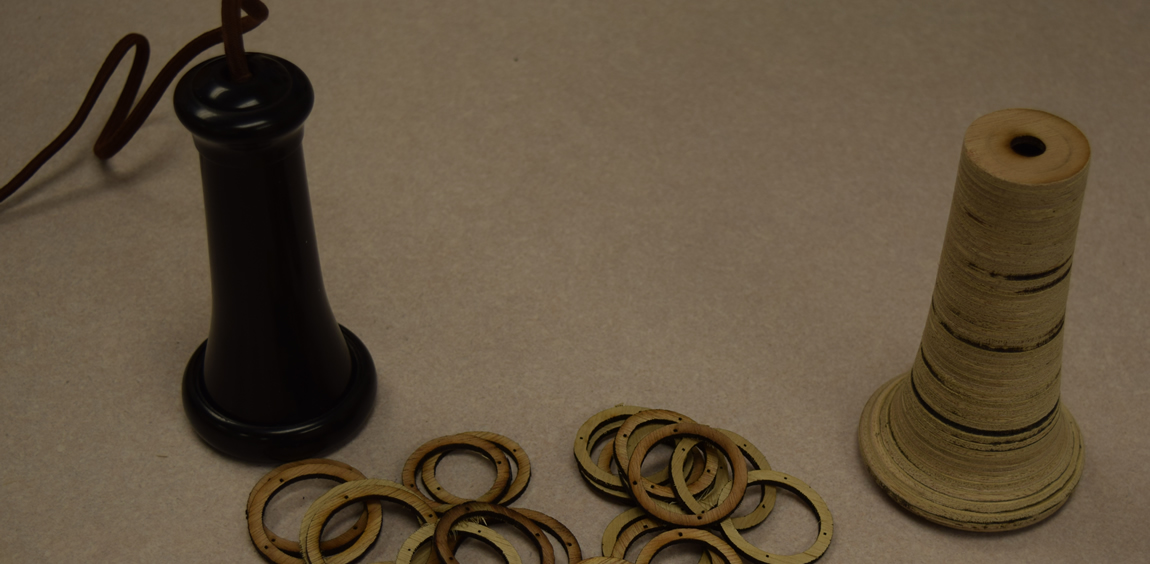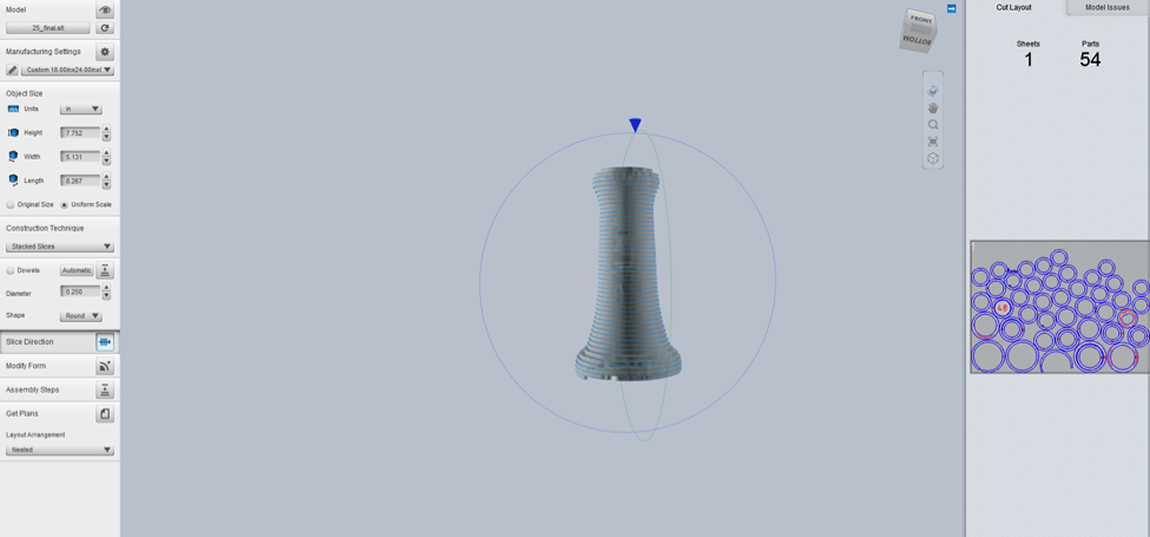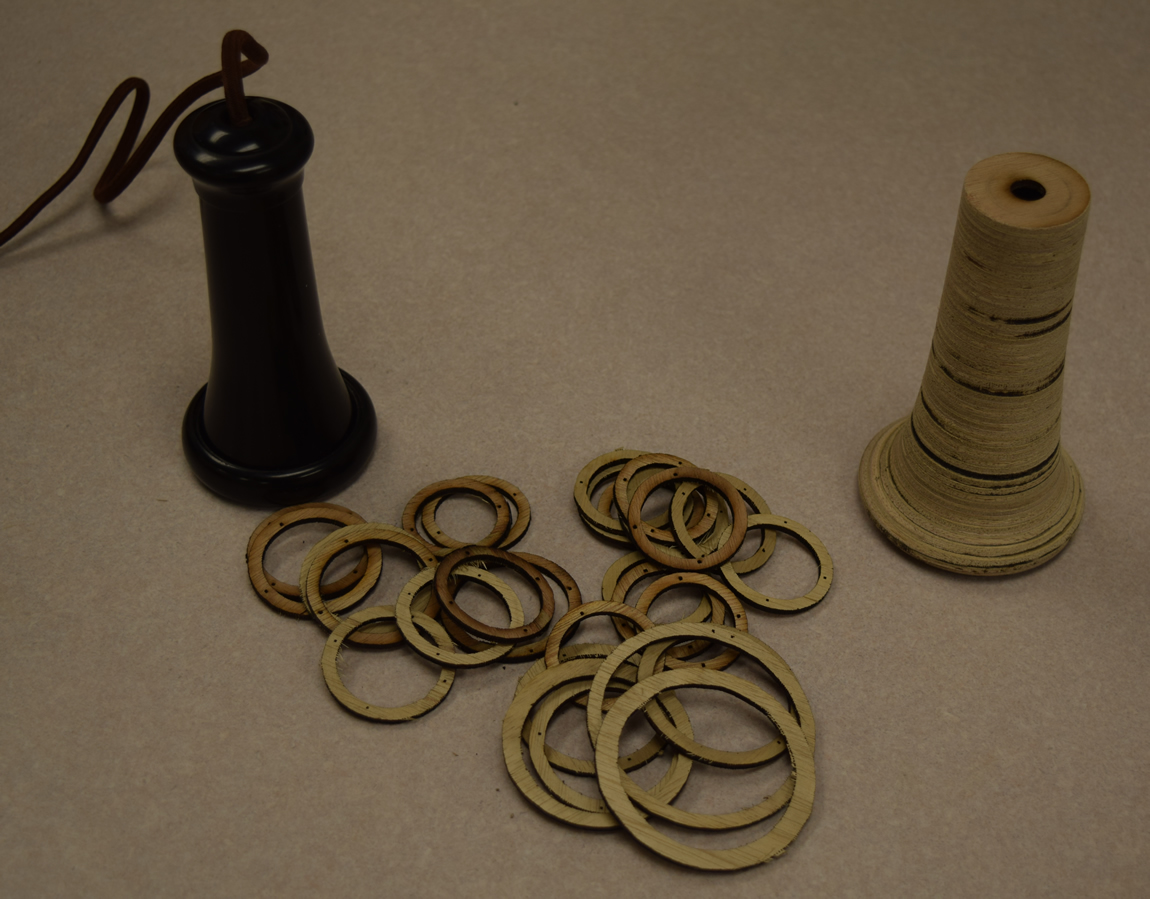As Danielle outlines in her post on “Kit Content as Kit Container,” Valdemar Poulsen likely used parts from a wall-mounted telephone to record and play back sound with his early magnetic recording prototype during the late 1890s. Recently, we acquired a transmitter and receiver from a 1901 Kellogg phone, which we’ve been using to test Poulsen’s method. Using this old phone, we are beginning to rebuild our own transmitter and receiver so that we can model Poulsen’s prototype, circulate its components, and experiment with them on- and off-screen. This past week I started rebuilding by scanning and cutting a wooden version of the Kellogg receiver. (The receiver is the earphone piece. In Poulsen’s prototype, it was used during playback.)
First, I used an HDI 120 3D scanner to digitize the telephone receiver into a 3D model (STL). I then exported the file and opened it in Autodesk 123D Make, which allows you to take 3D models and prep them for fabrication, or in our case, cutting the object into 2D parts using a CNC laser. In 123D Make, I was able to slice my model of the receiver into rings, which I could then cut from one sheet of wood.
Once the rings were cut, I stacked and glued them back into the shape of the model. I also sanded down the finished model to smooth out variations in texture. Pictured below is the original Kellogg receiver with unassembled rings (from my first attempt) and the remade receiver.
As we move forward with prototyping Poulsen’s prototype, we plan to investigate how replicating historical materials affects their function. While replicating form is fairly straightforward in the digitizing process, it is much more difficult to remake surfaces and other fine-grained details, especially across materials.
Post by Katherine Goertz, attached to the KitsForCulture and Makerspace projects, with the fabrication tag. Featured image for this post care of Katherine Goertz and the MLab.



